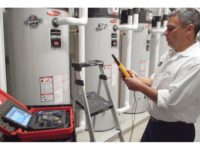Happy New Year!
In my last column of 2023, I discussed the growing use of Artificial Intelligence in engineering and construction firms. This month, I want to focus on another trend we will see continuing into this next year — sustainability and efficiency.
Just as Deloitte identified the advancement of digitalization and generative AI as one of five key areas that may help engineering and construction firms capitalize on projected industry growth and tackle unforeseen challenges, the 2024 Engineering and Construction Industry Outlook report also pointed to a heightened focus on sustainability and efficiency.
The integration of sustainable practices and energy-efficient technologies has become a paramount consideration in modern engineering, requiring professionals to strike a delicate balance between functionality, cost-effectiveness, and environmental impact.
According to Deloitte, “Sustainability is a business imperative in construction whose upfront costs may be balanced through long-term efficiency strategies.” The 2024 Engineering and Construction Industry Outlook also states that the U.S. government is prioritizing sustainable construction through the Federal Buy Clean Initiative. “For instance, the initiative has led to the specification of more than $2 billion for the procurement of lower-carbon construction materials like asphalt, concrete, and steel for federal procurement and their use in federally funded projects. It also resulted in the allocation of $100 million to support state, local government, and public utility purchases of building products derived from converted carbon emissions.”
Engineers know the choice of materials in plumbing and mechanical systems can significantly impact a building’s overall sustainability. Therefore, they must consider the life cycle of materials, the environmental impact, and their ability to be recycled or reused. Opting for eco-friendly materials reduces a project's carbon footprint and minimizes waste.
The 2024 Engineering and Construction Industry Outlook also points to tax credits and incentives like the Inflation Reduction Act, which provides incentives for businesses making energy-efficient improvements — such as HVAC systems, which we all know are major contributors to energy consumption. Engineers need to be open to adopting newer products such as heat pump technology and even look toward renewable fuel sources. It is also imperative they be aware of the federal, state and local tax incentives in their regions to help drive building owners in the right direction.
Engineers will always face challenges and trade-offs in the decision-making process. Budget constraints, client preferences and existing infrastructure may sometimes limit the implementation of the most sustainable solutions. Striking the right balance requires effective communication between engineers, architects and clients to align expectations and find practical, cost-effective solutions.
The demand for greener buildings is not going away. There are increasing government regulations paving the path toward a sustainable future. Engineers and their firms must adapt to evolving market trends, new technologies and environmental regulations while meeting customer needs and expectations. As stewards of the built environment, plumbing and mechanical engineers have the power to shape a more sustainable future for generations to come.



